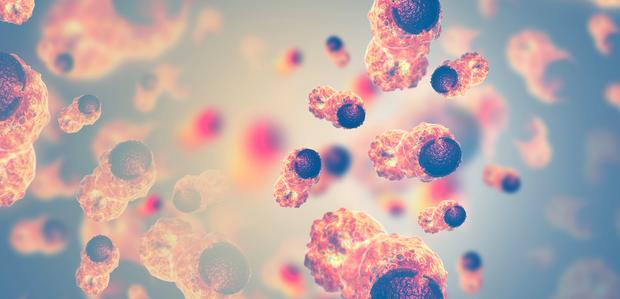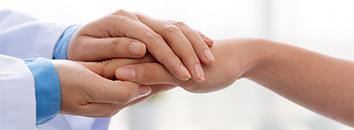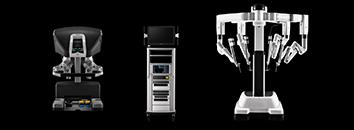Department of Cancer Care

Cancer has emerged as one of the main causes of death over the last decade and continues to pose significant challenges to modern medicine. Its widespread impact on millions of people globally underscores the urgent need for collaborative efforts to advance cancer care. In recent years, strides in medical research and technology have revolutionised cancer treatment, offering hope and improved outcomes for patients worldwide.
Recognizing this changing landscape, healthcare institutions such as Gleneagles Hospitals have emerged as pioneers, providing thorough and individualised care to tackle the intricacies of this illness.
Types of Cancer
Doctors categorise different forms of cancer, based on their origin. There are four major categories of cancer:
- Carcinomas: A carcinoma starts in the skin or the tissue that surrounds the surface of internal organs and glands. Carcinomas often create solid tumours. They are the most common form of cancer. Lung cancer, colorectal cancer, prostate cancer, and breast cancer are a few types of carcinomas.
- Sarcomas: The tissues that hold and link the body together are where sarcomas develop. A sarcoma may develop in the bones, muscles, blood vessels, tendons, nerves, fatty tissues, or joints.
- Leukemias: Blood cancer is known as leukaemia. Normal blood cells begin to expand and mutate out of control when leukaemia first appears. There are four primary forms of leukaemia: myeloid leukaemia, acute myeloid leukaemia, acute lymphocytic leukaemia and chronic myeloid leukaemia.
- Lymphomas: A cancer that starts in the lymphatic system is called lymphoma. A network of glands and tubes called the lymphatic system helps in the body's defence against infection. Hodgkin lymphoma and non-Hodgkin lymphoma are the two primary forms of lymphomas.
Diagnostic Procedures in Cancer Care
Diagnosis is the pivotal starting point in cancer care. Advanced diagnostic procedures play a crucial role in accurately identifying and characterising cancerous cells. These procedures enable doctors to devise tailored treatment plans and strategies. The most common diagnostic procedures in cancer care, include:
- Electrocardiogram (EKG) and Echocardiogram: Tests known as echocardiogram (echo) and electrocardiogram (ECG or EKG) are used to find anomalies in the heart's muscle, valves, or rhythm. One or both of these tests may be necessary before beginning some cancer treatments.
- Ultrasound: An ultrasound helps identify tumours by pinpointing their precise position within the body. It can assist a doctor in doing a biopsy as well.
- Pap test: The most popular test for identifying early changes in cells that may result in cervical cancer is the pap test. Another name for the test is Pap smear. It involves collecting cervix cell samples.
- Mammogram: An X-ray called a mammography is done to screen for breast cancer.
- Biopsy: A biopsy involves the removal of a little sample of tissue from the suspected cancerous region of the body by a doctor. A pathologist inspects the tissue under a microscope in a lab to check for cancer cells.
- Colonoscopy: Colonoscopy is a technique that allows a doctor to examine the colon, or large intestine, which is a part of the digestive system. A long, flexible tube known as a colonoscope is used for the surgery.
Surgical Oncology
The Department of Surgical Oncology at Gleneagles Hospitals, India is one of the six approaches to providing end-to-end Cancer Care services starting from treatment, and disease management to Rehabilitation.
Our Surgical Oncologists team provide inpatient and outpatient treatment for several illnesses like anal Cancer, Breast Cancer, Liver Tumour, Gastric Cancer, Colon Cancer, Rectal Cancer, Pancreatic Cancer etc. As a comprehensive Cancer Care centre, at Gleneagles Hospitals patients have access to state-of-the-art diagnostic modalities and the advanced instruments most effective during the surgeries and treatments.
The aim is to remove the diseased tissue, leaving the healthy ones, and ensure that the disease does not come back. The list of effective surgical treatments and surgical procedures for cancer are:
- Organ preserving surgeries
- Partial and complete resection of afflicted tissue
- Ablation of liver tumours
- Oncoplastic breast-conserving surgery
- Liver and pancreas cancer treatment
Surgical Oncology Care includes but is not limited to:
Head & Neck Oncology: Complex head & neck cancer surgeries | Micro vascular reconstructions with near 100% success rate | Best cosmetic & functional results | Skull base surgeries | Organ preservation surgeries | Multi-disciplinary team discussion & treatment
Gastro-Intestinal Oncology: Thoracic Laparoscopic Esophagectomy | Laparoscopic APR | Laparoscopic Ultra-low Anterior Resection | Laparoscopic Colectomy | Major Multi Organ Resection | Exenterations
Gynae-Oncology Surgeries: Laparoscopic Radical Hysterectomy | Laparoscopic Staging-carcinoma Ovary, Endometrium | Laparoscopic Pelvic Nodal Dissection | Laparoscopic Pelvic Exenteration | 3D Laparoscopic Surgeries
CRS+ Hipec For Peritoneal Surface Malignancies: Hyperthermic Intraperitoneal Chemotherapy (HIPEC) is a highly concentrated, heated Chemotherapy treatment | It is delivered directly to the abdomen during surgery | Allows for high doses of Chemotherapy | Enhances and concentrates Chemotherapy within the abdomen | Minimizes the rest of the body's exposure to the Chemotherapy | Improves Chemotherapy absorption and success | Complete cyto resection of all cancer affected regions (Cc0) | Best results & 100% success rate till date
Musculoskeletal Oncology: Expert treatment for soft tissue and bone tumours | Adult and Paediatric soft tissue tumours treatment | Limb conservative surgeries
Paediatric Oncology: Comprehensive treatment facilities | To all types of childhood cancers | Acute Lymphoblastic Leukaemia | Acute Myeloid Leukaemia | Chronic Myelogenous Leukaemia | Juvenile Myelomonocytic Leukaemia | Hodgkin's Lymphoma/Non-Hodgkin's Lymphoma | Bone Tumours | Nephroblastoma | Neuroblastoma | Rhabdomyosarcoma/Soft tissue Sarcoma | Germ cell Tumours | Brain Tumours | Advanced Paediatric Intensive Care unit.
LUNG & BRONCHIAL CANCER
Smoking and the use of tobacco are the major causes of lung and bronchial cancer. It is the top killer cancer in the world.
BREAST CANCER
Breast cancer is the second most common cancer in women, after skin cancer. This cancer usually forms in the glands that produce milk in women.
PANCREATIC CANCER
Pancreatic cancer begins in the tissues of the pancreas and it aids in the process of digestion and metabolism regulation.
COLON & RECTAL CANCER
Colon cancer grows in the tissues of the Colon and rectal cancer develops towards the end of the large intestine near the anus.
OVARIAN CANCER
This cancer is easy to treat but hard to detect in the early stages. According to recent research, a few signs that may aid in diagnosis are abdominal discomfort, urgency to urinate and pelvic pain.
CERVICAL CANCER
Cervical cancer is a cancer that starts in the cells present on the surface of the cervix. They are caused by HPV (human papillomavirus), a common virus that is spread through sexual intercourse.
MEDICAL ONCOLOGY
The Department of Medical Oncology at Gleneagles Hospitals is known for its superior patient care and clinical outcomes. Medical oncologists work together with surgeons and radiotherapists in deciding the treatment and delivering it. The team efforts help the patient receive effective care and the best possible quality of life.
The team of oncologists, physicians and other specialists are collectively dedicated to providing top-class services for patients suffering from various types of cancer. Our team of doctors and surgeons are trained by renowned institutions. Every year our team of doctors provides care and treatment for over more than 2000 children and adults suffering from various cancers and also many complex cancers with utmost dedication and commitment.
With the latest technology, skilled physicians, compassionate staff and well-equipped wards Gleneagles Hospitals provide care for all the patients. Gleneagles Hospitals strives to provide quality care and it exceeds patients’ expectations.
The treatment provided is accessible, cost-effective and convenient. The hospital is well-equipped with a good infrastructure.
Medical oncology is a type of cancer care that involves treatment using chemotherapy, immunotherapy, hormone therapy, and targeted therapy. It effectively works in the treatment of cancer, when combined with other cancer care treatments such as radiation oncology and surgical oncology.
Haemato Oncology
The blood is composed of four components: white blood cells, red blood cells, platelets, and plasma. These components work together to transport oxygen to organs and tissues, acting as a protective agent to guard against infections and to form blood clots to stop bleeding. However, they also contain abnormal invaders acting as a cancer-causing agent. This is where haematology oncology comes in.
The medical speciality that deals with diseases connected to the blood is known as haematology. The area of medicine known as oncology is concerned with the identification, management, and prevention of certain cancers. All types of blood cancers, which account for up to 10% of all cancers worldwide, are covered under haemato-oncology. A haemato-oncologist is a specialist who handles these conditions. Haemato-oncology involves conditions such as leukaemia, anaemia, haemophilia, lymphomas, and cancer of various organs.
The haemato-oncologists at Gleneagles Hospital have a great deal of expertise in their specialities and have conducted extensive work both in India and abroad. They have received extensive training in the transplantation of haematopoietic stem cells. Our multidisciplinary team, consisting of lab hematopathologists, haemato-oncologists, and lab technicians, is properly equipped and trained to provide the best care while considering the delicate nature of the patient's medical conditions.
What Symptoms Require a Haemato Oncologist's Consultation?
Although no two blood cancers are the same, they all exhibit some common symptoms that indicate it's time to consult with a haemato-oncologist. Here are some of the warning signs and symptoms of blood cancer:
- Tiredness
- Chest Pain
- Weight loss
- Frequent fevers and chills
- Lower appetite
- Abdominal feeling of heaviness
- Blood clots
- Nasal and gum bleeding
- Several blue marks across the body
- Require blood transfusions regularly
- Recurrent serious infections
The Department of Haematology provides state-of-the-art care for a wide spectrum of diseases including:
- Acute leukaemia
- Adrenoleukodystrophy
- Aplastic anaemia
- Bone marrow failure syndromes
- Chronic leukaemia
- Hemoglobinopathies
- Hodgkin’s lymphoma
- Immuno deficiencies
- Inborn errors of metabolism
- Multiple myeloma
- Myelodysplastic syndromes
- Non-Hodgkin’s lymphoma
- Plasma cell disorders
- Primary amyloidosis
Diagnostic Procedures Performed
A haemato-oncologist will conduct a series of tests on a patient exhibiting these symptoms to determine their source and any potential association with cancer. These procedures may include blood tests, bone marrow examinations, diagnostic imaging studies, and others.
The diagnostic tests include:
- PET scans
- MRI scans are used to determine the stage of myelomas and lymphomas.
- Immunophenotyping (a technique used to examine the protein expressed by cells)
- Molecular tests to check for mutations
- Cytogenetics is used to examine chromosomal alterations in cancer cells.
- Histopathology and biopsies
Radiation Oncology
Cancer is challenging, but you don't have to go through it alone. Cancer care is a complex area where medical oncologists, surgical oncologists, and radiation experts work hand-in-hand to treat this debilitating condition for a better prognosis.
One of the pivotal areas of cancer care is Radiation Oncology, a vital branch of medical science dedicated to treating cancer through controlled radiation therapy. This niche speciality employs techniques, including external beam radiation and brachytherapy, to target and destroy cancerous cells while minimizing harm to healthy tissue.
Radiation oncologists are crucial in developing personalized treatment plans, ensuring precise delivery of radiation doses, and monitoring patients' progress throughout therapy. This multidisciplinary approach combines medical expertise, cutting-edge technology, and a deep commitment to patient care to improve cancer outcomes, alleviate symptoms, and enhance patients' quality of life.
At Gleneagles Hospitals, our commitment to providing cutting-edge medical care and unwavering support is exemplified in the Radiation Oncology department. Being a critical component of comprehensive cancer care, we at Gleneagles Hospitals offer state-of-the-art technology and a team of extensively trained professionals dedicated to guiding you through your cancer treatment with precision and compassion.
Who Needs Radiation Oncology?
Radiation Oncology is an advanced and specialized field of medicine that uses high-energy radiation to attack cancer cells and other diseases. This treatment is primarily recommended for:
Cancer Patients: Radiation therapy is commonly used to treat various types of cancer, including but not limited to breast cancer, lung cancer, prostate cancer, and brain tumours. Depending on the specific diagnosis and staging, it can be used as a primary treatment or in combination with surgery, chemotherapy, or immunotherapy.
Non-Cancerous Conditions: In some cases, radiation therapy may be utilized to manage non-cancerous conditions such as benign tumours, arteriovenous malformations, and keloids.
Tests and Treatment Procedures Under Radiation Oncology
At Gleneagles Hospitals, we offer a wide range of tests and treatment procedures under Radiation Oncology to cater to individual patient needs:
Consultation and Evaluation: Your journey with Radiation Oncology begins with a thorough consultation. Our team of radiation oncologists will review your medical history, perform physical examination, and discuss your treatment options. They will work closely with other oncology specialists and you to create a personalized integrated treatment plan tailored to your unique condition and goals.
Imaging and Simulation: Precision is paramount in radiation therapy. Advanced imaging techniques, such as CT scans and MRI, are used to precisely locate the tumour and determine the optimal radiation dose and treatment angles. This simulation phase ensures the radiation targets the cancer cells while sparing healthy tissues.
How is radiotherapy given?
There are two main ways of receiving radiotherapy:
- External radiotherapy where the radiation comes from a machine from outside the body.
- Internal radiotherapy where the radiation comes from implants or liquids placed inside the body.
Treatment Delivery: Gleneagles Hospitals is equipped with the latest technology in radiation therapy, including Linear Accelerators and CyberKnife systems. These devices deliver high-energy radiation beams with exceptional precision. Treatment sessions are typically painless and non-invasive and can be completed on an outpatient basis.
Intensity-Modulated Radiation Therapy (IMRT): IMRT is a sophisticated radiation therapy technique that allows for the precise adjustment of radiation intensity. It is particularly beneficial when tumours are near critical organs, as it minimizes damage to healthy tissues.
Image-guided radiotherapy (IGRT): When undergoing IGRT, high-quality images are taken before each radiation therapy treatment session. The images are used to increase the accuracy and precision of the radiation treatment. IGRT may make it possible to use higher doses of radiation. This may increase the effectiveness of the treatment and may result in shorter treatment schedules. The radiation may reach less of the healthy tissue around the target.
Stereotactic radiotherapy (SRT): Stereotactic radiotherapy (SRT) gives radiotherapy from many different angles around the body. The beams meet at the tumour. This means the tumour receives a high dose of radiation and the tissues around it receive a much lower dose. This lowers the risk of side effects.
Chemoradiotherapy: In some instances, radiation therapy is sometimes combined with chemotherapy to enhance its effectiveness. This combination can be used as part of a curative treatment plan or to alleviate symptoms of advanced cancer.
Highlights
- High-end advanced technology with true beam STx machine
- 24-channel BAT therapy machine for internal radiation
- Treatment of small and large tumours located in critical areas with a multi-disciplinary approach
- Good outcomes with minimal toxicity
- Sophisticated image guidance and motion management tools
- Effective treatment in breast, gynaecology, lung, head & neck, gastrointestinal, Genito-urinary, spinal column, soft tissue, bone and benign tumours
- 3D Conformal Radiotherapy (3DCRT)
- Intensity Modulated Radiotherapy (IMRT)
- Image Guided Radiotherapy (IGRT)
- Rapid ARC (Volumetric modulated ARC therapy)
- Stereotactic radiosurgery (SRS), including intensity
- Modulated radiosurgery and Image Guided Radio Surgery (IGRS)
- Stereo tactic radiotherapy (SRT)
- Stereotactic body radiotherapy for extracranial sites
Follow-up and Support
Your care doesn't end with treatment. Our team provides comprehensive follow-up care to monitor your progress and manage any side effects. We also offer a range of support services, including counseling, nutrition guidance, and support groups to address your cancer journey's emotional and practical aspects.
At Gleneagles Hospitals, we are committed to providing patient-centred care that addresses your specific needs and concerns. Our Radiation Oncology department is helmed by a highly trained radiation specialists committed to helping you achieve the best possible outcome in your fight against cancer. When you choose Gleneagles Hospitals, you choose a partner in your journey to recovery and a brighter future.
Nuclear Medicine
Nuclear Medicine is the branch of medicine that deals with the use of radioactive substances in research, diagnosis, and treatment of diseases. The Nuclear Medicine Department of the Gleneagles Hospitals provides a full range of procedures to treat patients suffering from various diseases. The team of doctors keep upgrading themselves with the advanced procedures related to Nuclear Medicine.
A lot of skill and training is required for the doctors of this department. Our doctors have many years of experience and they are also guided by the senior doctors. The laboratory is well-equipped and well-maintained at the Gleneagles Hospitals.
The hospital has been staffed by nurses, physicians and technicians who perform all the tests and procedures with care and provide the best of the best service to all our patients.
Nuclear Medicine is one of the components of molecular imaging wherein small amounts of radioactive substance are used for diagnosis and treatment. In most cases, the radio-nuclear compounds are injected into an individual via the arm or made to swallow in pills/liquid form. The resulting scans are safe, pain-free and not known to have any side effects. The Department of Nuclear Medicine at Gleneagles Hospitals employs state-of-the-art technology and infrastructure for carrying out molecular imaging.
Tests performed include:
- Positron Emission Tomography: A Positron Emission Tomography is used to diagnose Cancer, determine the stage of the Cancer, and diagnose Nervous System and Cardiovascular Diseases. During the procedure, a radioactive substance is injected through the vein in the arm. Then the PET scan is obtained. PET scanner looks similar to the CT scanner. Drinking adequate fluids after the procedure helps flush the radioactive substance in the form of urine.
- Bone Scan: A bone scan is used to examine the bones for any abnormalities such as infection, arthritis, fractures, or a Tumour. The procedure involves injecting a radioactive material into the vein of the arm. This radioactive material collects in bone, especially in the areas where there is an increased activity. It may take hours for the bones to absorb the radioactive material. Then, the bone scans were taken to obtain the images of the bone. The procedure may take about 30 to 60 minutes. Drinking adequate fluids after the procedure helps flush the radioactive substance in the form of urine.
Some of the more common tests include the following:
- Renal scans. These are used to examine the kidneys and to find any abnormalities. These include abnormal function or obstruction of the renal blood flow.
- Thyroid scans. These are used to evaluate thyroid function or to better evaluate a thyroid nodule or mass.
- Bone scans. These are used to evaluate any degenerative and/or arthritic changes in the joints, to find bone diseases and tumors, and/or to determine the cause of bone pain or inflammation.
- Gallium scans. These are used to diagnose active infectious and/or inflammatory diseases, tumors, and abscesses.
- Heart scans. These are used to identify abnormal blood flow to the heart, to determine the extent of the damage of the heart muscle after a heart attack, and/or to measure heart function.
- Brain scans. These are used to investigate problems within the brain and/or in the blood circulation to the brain.
Why Choose Gleneagles Hospitals?
The Gleneagles Hospitals feature state-of-the-art technology, including advanced imaging machines and radiation equipment, enabling precise diagnosis and treatment. Moreover, the hospital is home to a team of highly skilled team with the latest advancements in cancer care. We are dedicated to providing advanced cancer care through continuous research and innovation. By actively participating in clinical studies, the hospital stays at the forefront of pioneering treatments and technology, ensuring patients have access to novel and cutting-edge healthcare solutions.
At Gleneagles Hospitals, however, the treatment design follows an integrated approach that involves super specialists from various other medical specialities to form the "Multi Super Specialty Organ-Specific Cancer Care".
Understanding Cancer
Cells are the fundamental building blocks of the human body. When the body requires new cells, it undergoes the process of proliferation and division to create them. Cells often perish when they age or sustain injuries. Then, fresh cells grow in their place. When changes in genes tamper with this well-organised mechanism, cancer develops. Cancer is the uncontrolled growth of abnormal cells within the body, forming tumours or invading nearby tissues. These cells have the potential to spread to other parts of the body, a process known as metastasis.
Cancer care encompasses a multidisciplinary approach designed to diagnose, treat, and provide support to individuals affected by this disease. It combines medical expertise, technological advancements, and compassionate support to address the physical, emotional, and psychological needs of patients and their families.
Types of Cancers Treated at Gleneagles Hospitals
- Liver Cancer
- Breast Cancer
- Lung Cancer
- Stomach Cancer
- Brain Tumour
- Skin Cancer
- Blood Cancer
At Gleneagles Hospitals: Highly qualified and dedicated full-time medical Oncologists | Complete expertise in the management of haematological malignancies | Personalised chemotherapy to individualise chemo treatment for every patient | Updated with the newer technologies | Practices Targeted therapy | Immunotherapy | Exclusive day care chemotherapy ward | Most patient friendly professional approach
Types of Cancer Treatment
The cancer treatment involves various modalities, often utilised in combination for optimal efficacy. Each treatment method targets cancer cells differently, aiming to either surgically remove tumours, destroy cancerous cells through radiation or drugs, or enhance the body's immune system to combat the disease. The selection of treatment depends on factors such as cancer type, stage, overall health, and patient preferences. Primary cancer treatments include:
Why Choose Us?
-
PATIENT EXPERIENCE
Your care and comfort are our top priorities. We ensure that the patients are well informed prior to every step we take for their benefit and that their queries are effectively answered.
-
LATEST TECHNOLOGIES
The Gleneagles Hospitals' team stays up to date on the advancements in medical procedures and technologies. Experience the Future Healthcare Technologies now at Gleneagles Hospitals.
-
PROVIDING QUALITY CARE
Strengthening lives through compassionate care, innovative therapies and relentless efforts. It reflects in the DNA of our passionate team of doctors and dedicated clinical staff.










